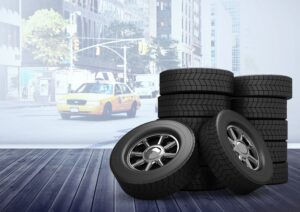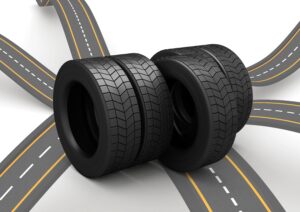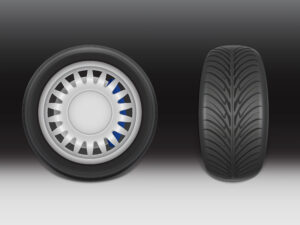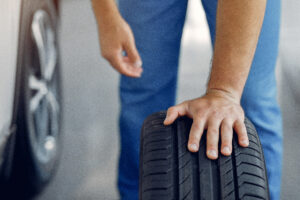Honda City Tyre Pressure: Your Complete Guide to Optimal Tyre Care
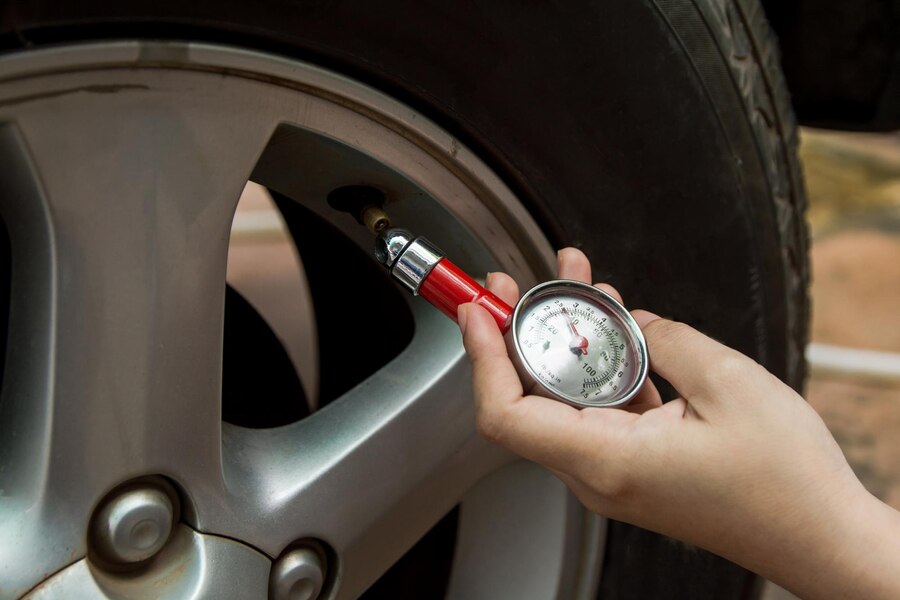
Maintaining the correct Honda City tyre pressure is a fundamental aspect of vehicle maintenance that can have a significant impact on your safety, comfort, and the overall performance of your car. Keeping the tyre pressure at the recommended PSI for Honda City ensures a smooth, efficient ride, longer tyre life, and better fuel efficiency. Whether you’re driving through city traffic or embarking on a long road trip, knowing the proper Honda City tyre pressure is essential for maximizing your car’s potential. This guide will walk you through everything you need to know about maintaining optimal tyre pressure, including how to adjust it for different driving conditions, the benefits of proper inflation, and expert tyre care tips.
Understanding Tyre Pressure for Honda City
Proper tyre inflation is one of the most important aspects of Honda City tyre care. Maintaining the correct Honda City tyre pressure has several crucial benefits for both your car’s performance and your safety.
- Safety: Tyre pressure plays a major role in vehicle safety. Incorrect Honda City tyre pressure, whether too low or too high, can lead to dangerous driving conditions. Low pressure increases the chances of tyre blowouts or loss of control, while over-inflated tyres reduce grip and may cause poor braking performance. By maintaining the recommended PSI for Honda City, you ensure better road contact and increased stability, which reduces the risk of accidents.
- Comfort: The correct Honda City tyre pressure also directly impacts your ride comfort. Over-inflated tyres can lead to a harsh, bumpy ride, while under-inflated tyres may cause excessive vibrations and noise. Maintaining optimal tyre pressure ensures a smoother, more comfortable ride for both the driver and passengers.
- Tyre Longevity: One of the major benefits of consistent Honda City tyre care is extending the life of your tyres. Over or under-inflated tyres tend to wear unevenly, leading to premature damage and the need for costly replacements. By ensuring your tyres are always at the recommended PSI for Honda City, you reduce the rate of wear and ensure they last longer, saving you money in the long run.
- Fuel Efficiency: Properly inflated tyres contribute to fuel-efficient tyre pressure, reducing rolling resistance. When your tyres are inflated to the correct level, your car requires less energy to move, leading to better fuel efficiency and fewer trips to the gas station. Regularly checking and adjusting your Honda City tyre pressure can improve your car’s mileage, which is an essential aspect of Honda City tyre care.
Recommended PSI for Honda City
Front and Rear Tyre Pressure for Honda City
The recommended PSI for Honda City varies depending on the load in the car. For optimal performance and safety, here’s what you need to know about front and rear tyre pressure for Honda City:
- Front tyres: 32 PSI (unloaded) to 38 PSI (loaded)
- Rear tyres: 30 PSI (unloaded) to 35 PSI (loaded)
These pressure ranges ensure that the Honda City tyre pressure is balanced for comfort, handling, and safety. Adjusting the tyre pressure based on the load in the vehicle helps maintain stability and prevents uneven wear.
Optimal Pressure for City Driving vs. Long Trips
For optimal pressure for city driving, you typically want to keep your tyres at the lower end of the range, around 32 PSI for the front tyres and 30 PSI for the rear. This ensures a comfortable ride and efficient fuel consumption on shorter, stop-and-go trips.
On the other hand, when preparing for long trip tyre settings, it’s recommended to increase the pressure to the higher end of the range—38 PSI for the front tyres and 35 PSI for the rear tyres. This adjustment improves handling, reduces rolling resistance, and enhances tyre longevity, making your long drives safer and more efficient.
Tyre Pressure Variations for Driving Conditions
The ideal Honda City tyre pressure may vary depending on the road conditions and driving style. Here’s how to adjust your Honda City tyre pressure for different scenarios:
- City Driving: For everyday city driving, maintaining a moderate tyre pressure is key. The optimal pressure for city driving ensures a smooth, fuel-efficient ride without compromising safety or comfort. Typically, you can keep your tyre pressure at 32 PSI in the front and 30 PSI in the rear for a balanced driving experience.
- Highway Driving: If you’re planning a long highway journey, consider increasing the pressure slightly. Long trip tyre settings (around 38 PSI for the front tyres and 35 PSI for the rear) provide better stability at high speeds and improve fuel economy on straight highways.
- Mountain Driving: When driving through mountainous or hilly terrain, the tyres need more grip. Lowering the tyre pressure slightly for better traction might be a good idea, but always stay within the Honda City tyre pressure range to avoid potential issues.
- Seasonal Adjustments: Temperature changes significantly impact Honda City tyre inflation. In colder months, tyres tend to lose pressure, while warmer temperatures can cause overinflation. Regularly check the pressure during these times to ensure your tyres stay within the recommended PSI for Honda City range.
Benefits of Maintaining Proper Tyre Pressure
Maintaining the Honda City tyre pressure at the correct level offers several significant benefits:
- Fuel-Efficient Tyre Pressure: Fuel-efficient tyre pressure improves the overall fuel economy of your vehicle. Properly inflated tyres reduce rolling resistance, which in turn lowers fuel consumption, saving you money on gas.
- Longer Tyre Life: By keeping your tyres inflated correctly, you prevent uneven wear patterns that can lead to premature damage. A well-maintained Honda City tyre pressure extends the life of your tyres, making them more durable and cost-effective.
- Enhanced Vehicle Handling: The Honda City tyre pressure is crucial for optimal handling. When your tyres are inflated correctly, they maintain better contact with the road, providing better grip and stability. This results in improved vehicle control, particularly in adverse conditions.
- Safety and Comfort: Proper tyre inflation reduces the risk of accidents and enhances comfort by preventing excessive vibrations or harsh handling. Regularly maintaining the recommended PSI for Honda City tyres will keep you safe and comfortable on all types of roads.
Common Tyre Care Tips for Honda City Owners
To ensure the longevity and performance of your tyres, follow these simple tips for Honda City tyre care:
- Inspect tyre pressure weekly: Check the Honda City tyre pressure at least once a week using a reliable tyre gauge.
- Rotate tyres every 10,000 km: Regular tyre rotation ensures even wear and prevents uneven damage.
- Use a reliable tyre inflator: Ensure you have a high-quality tyre inflator to make adjustments as needed.
- Check for punctures or leaks: Always check for visible damage and address any punctures or leaks immediately to avoid tyre failure.
Recommended Products and Services for Tyre Maintenance
For expert tyre care, KwikFix Auto offers professional services that include:
- Tyre replacement for damaged or worn-out tyres
- Inflation checks to maintain the Honda City tyre pressure
- Complete tyre care services, including balancing and alignment
Their experienced technicians specialize in top brands like Bridgestone, Goodyear, and Michelin, and they can help you maintain the best pressure for Honda City tyres.
Contact KwikFix Auto for hassle-free tyre maintenance
Conclusion
Maintaining the Honda City tyre pressure at the correct level is essential for your car’s performance, safety, and fuel efficiency. By regularly checking and adjusting your tyres, you can ensure a smoother ride, longer tyre life, and better control on the road. Follow the tips in this guide to keep your Honda City tyre pressure at its optimal level for every driving condition. Don’t forget to seek professional tyre care services from experts like KwikFix Auto to ensure your tyres stay in top shape. Drive safely and efficiently with the right tyre maintenance!
Frequently Asked Questions
Q1. What is the ideal Honda City tyre pressure?
A1. The recommended PSI for Honda City tyres is typically 32 PSI for the front tyres and 30 PSI for the rear tyres when unloaded. Adjustments should be made depending on the load and driving conditions.
Q2. How do I check my Honda City tyre pressure?
A2. You can check the Honda City tyre pressure using a reliable tyre pressure gauge. It’s best to check the pressure when the tyres are cold, as this gives the most accurate reading.
Q3. Can incorrect Honda City tyre pressure affect fuel efficiency?
A3. Yes, incorrect tyre pressure increases rolling resistance, which can decrease fuel efficiency. Maintaining the fuel-efficient tyre pressure helps improve your car’s mileage.
Q4. What happens if my Honda City tyre pressure is too high or too low?
A4. Over-inflated tyres lead to a rough ride and reduced traction, while under-inflated tyres cause excessive wear and increased risk of blowouts. Both conditions compromise safety and handling.
Q5. How often should I check my Honda City tyre pressure?
A5. It’s recommended to check your Honda City tyre pressure at least once a week or before long trips to ensure optimal performance.
Q6. Can I adjust the Honda City tyre pressure myself?
A6. Yes, you can adjust the Honda City tyre pressure yourself using a tyre inflator and gauge. Be sure to follow the recommended PSI for Honda City tyres.
Q7. How can I maintain Honda City tyre pressure during seasonal changes?
A7. Regularly check your Honda City tyre pressure during seasonal changes, as temperature fluctuations can cause the pressure to drop or increase. Always maintain the correct PSI for the season.
Q8. What is the difference between city driving tyre pressure and long trip tyre settings?
A8. For city driving, you typically want to keep your tyres at 32 PSI for the front and 30 PSI for the rear, while for long trips, increase the pressure to 38 PSI for the front tyres and 35 PSI for the rear tyres to ensure better stability and efficiency.
Related Articles
Car AC Gas Filling Cost | Electric Car Battery Capacity | How Car AC Works | How to Clean Car AC Filter | Car AC Repair Cost | AC Chair Car vs Executive Chair Car | Which Gas is Used in Car AC | Does AC in Car Consume Fuel | Why My Car AC is Not Cooling | Xylo Car Mileage with AC

